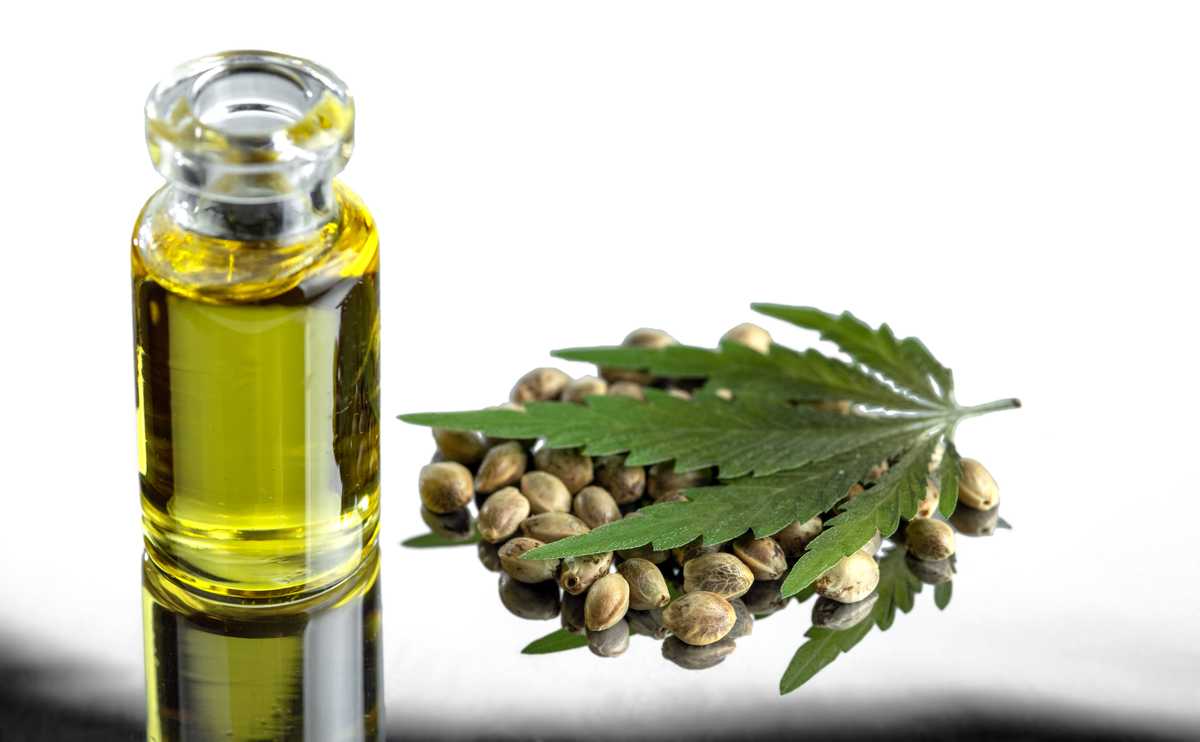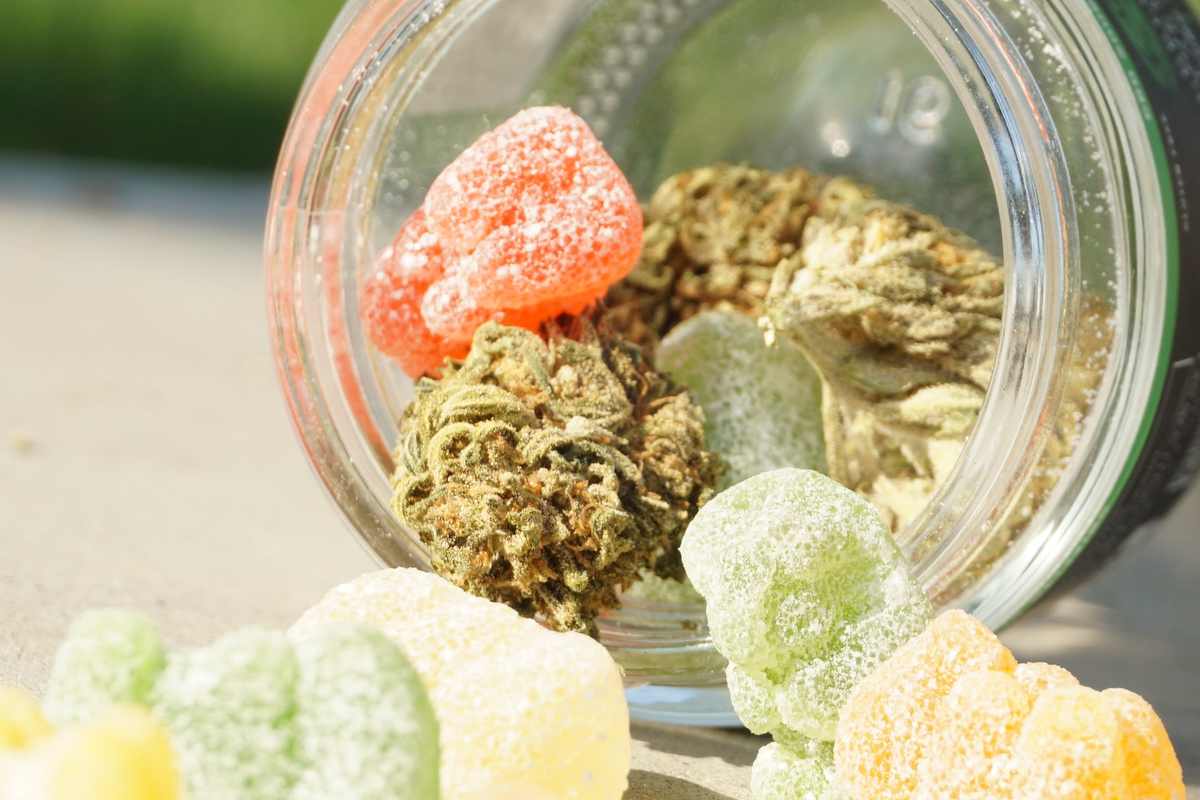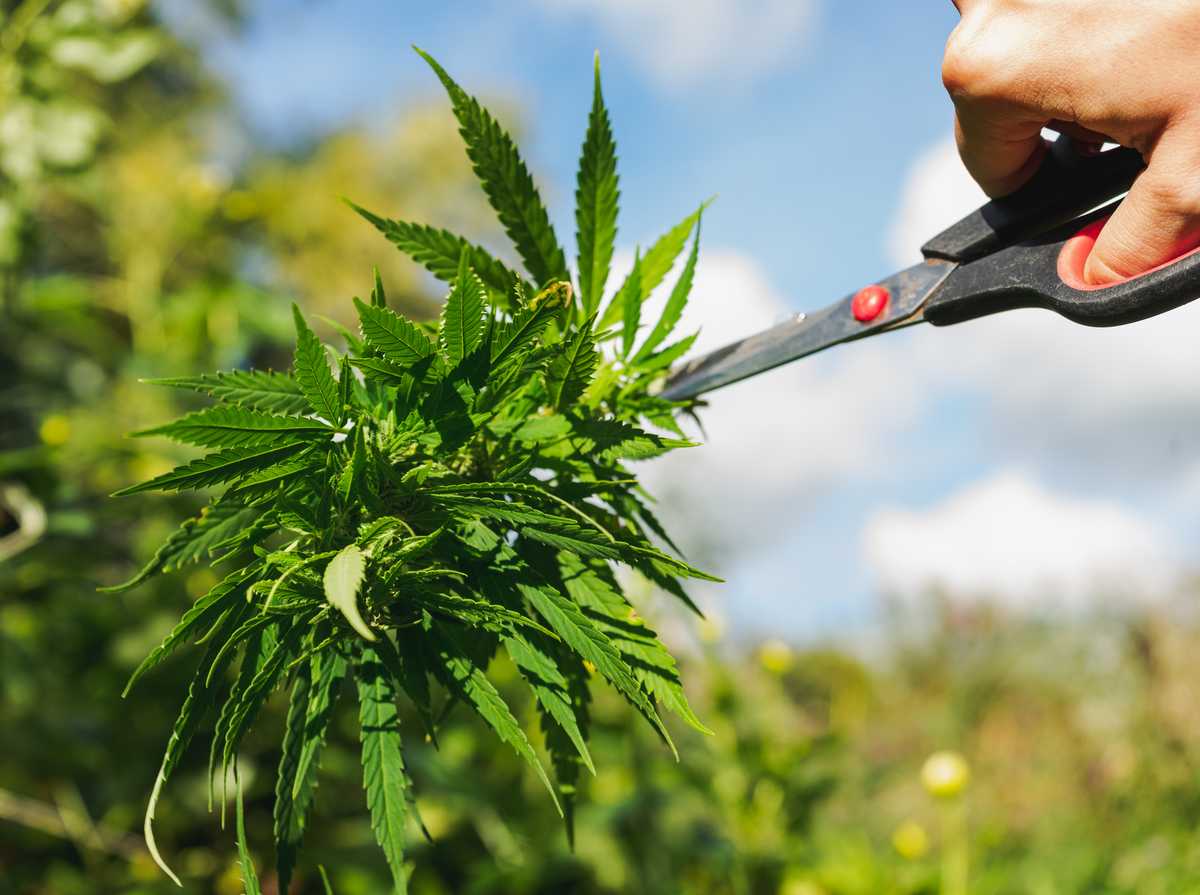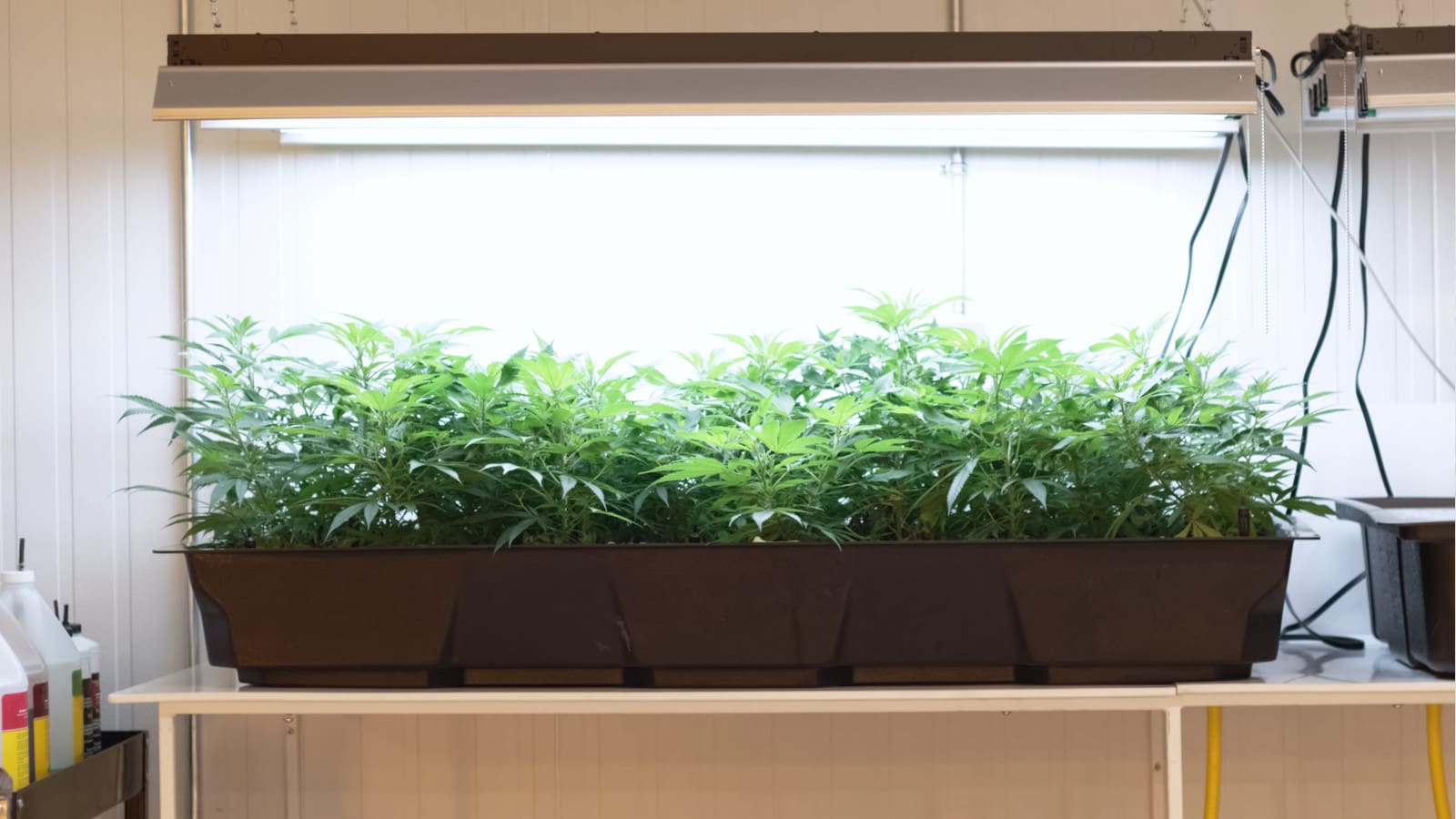
Hydroponic Cannabis: The Benefits Of Growing Indoor Marijuana
- What is a Hydroponic System for Weed?
- What are the Pros and Cons of Growing Hydroponic Weed?
- What are the Different Kinds of Hydroponic Grow Systems?
- Ebb and Flow System: Difficulty: Beginner
- Deep Water Culture: Difficulty: Beginner
- Hydro Wick System: Difficulty: Beginner
- What are the Mediums for a Hydroponic Grow?
Whether you are a beginner, or a professional medical cannabis grower looking to get started, the big question lingering on everyone’s mind is; “Which is the best option of growing weed - hydroponic or soil?”
Read further to know everything about hydroponic (hydro) v/s Soil cultivation, which will guide you in-depth about the pros and cons of both the methods.
Note: growing hydroponic cannabis may be illegal in your area. Before attempting to grow hydro cannabis, check your local laws.
Table of Contents.
What is a Hydroponic System for Weed?
Any type of Weed, Cannabis, or Marijuana, which is grown without using soil as a growing medium, can be termed as Hydroponic Weed.
Various growing procedures, all the organic nutrients that are found in the soil are directly applied to the weed during its growth phases.
There are extra steps involved in hydroponic growing environments.
What happens if you fail to water the cannabis plants or if your water pump breaks? In this situation, the roots go uncovered and are exposed to light, drying them out and causing permanent damage.
This sounds scary, but it doesn’t deter anyone from using hydroponics due to their convenience and environmental control.
One important fact is - the hydroponic grow system requires additional safeguarding and maintenance - when compared to growing natural cannabis outdoors with soil.
There are two main dangers for people looking to grow cannabis with a hydro system; these are:
- Absence of water for even a short period AND
- A small alteration in the pH factor (pH is the measure of acidity’s presence is the basic water. It also determines the water quality) can ruin the crop.
This is the intermediate-to-advance level of growing cannabis, and to start growing legal cannabis with a hydroponic system, you have to be prepared.
Though it requires an extra effort during the crop growth, the hydroponic system provides the grower with excellent control over the nutrients that plants absorb via roots during their growth stages.
The remaining water that plants fail to absorb can be reprocessed and used again in the system.
This is why a large number of commercial medical cannabis cultivation facilities favour hydro growing setups, as it gives them more control over the growing and flowering stages.
What are the Pros and Cons of Growing Hydroponic Weed?
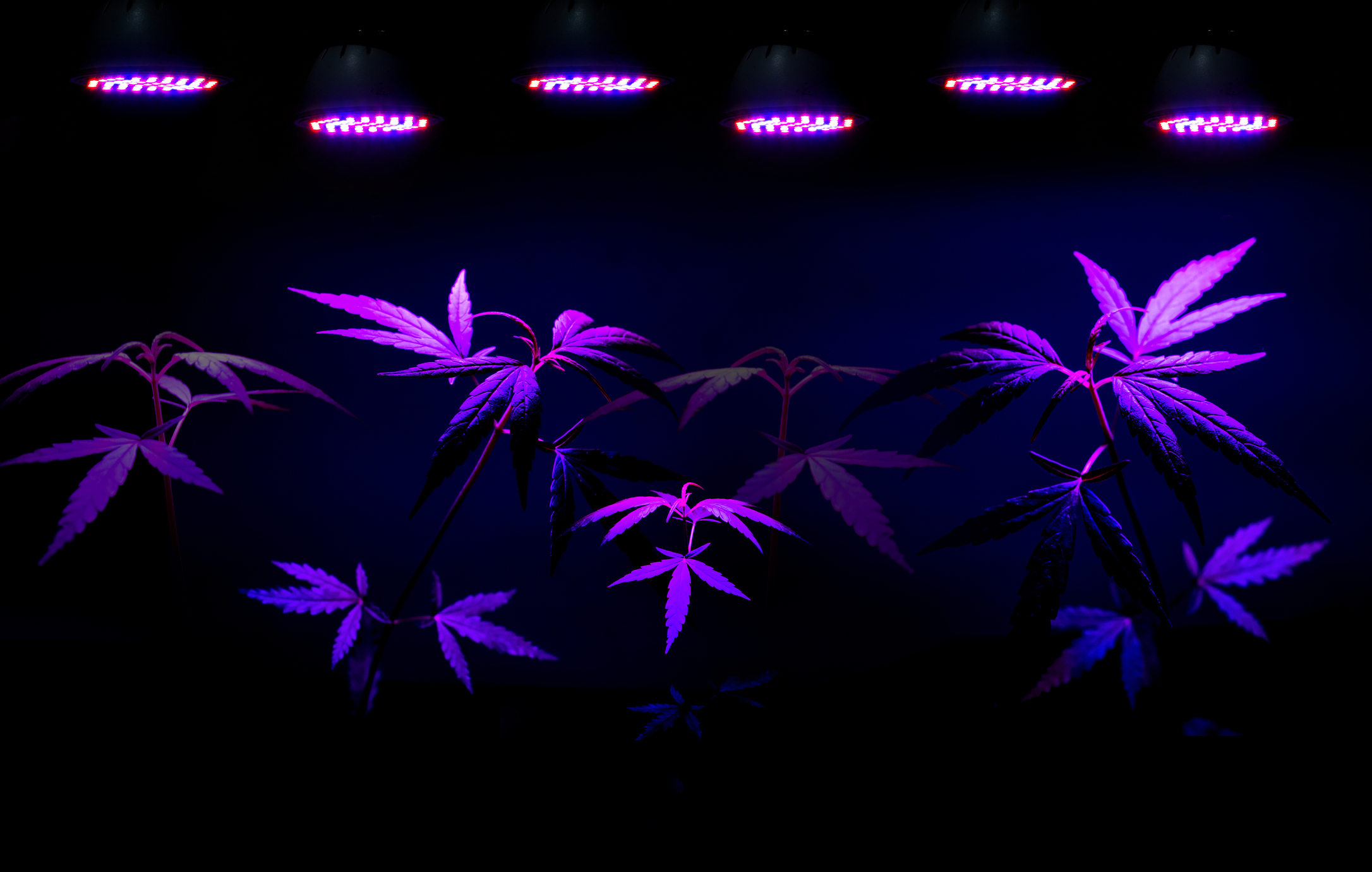
Similar to any alternative cultivation methods, growing hydroponic weed also has two sides - lots of benefits blended with a few restrictions and challenges!
Some of the growers who focus purely on hydroponic weed growing, swear by hydro as the best way to produce high-quality cannabis. This is usually due to the superior control growers have over the environment that keeps cannabis plants safe from diseases, insects, pests, heat, etc.
The hydro grower has complete control of the supply of nutrients that plants absorb through the roots. They claim that the cannabis grown with hydroponics grow faster and also have bigger yields with higher levels of CBD and THC.
Hydroponic systems are indoor friendly and allow for maximum growing efficiency in cannabis grow houses. Hydro can use recycled water and allows growers to produce healthy plants in a controlled environment.
In the eyes of academia, D.R. Hoagland and D.I. Arnon conducted a massive study on hydroponic systems for weeds and concluded that this system does not produce extra yields as per the claims of some growers.
On the other side, take a look at any of the YouTube videos depicting soil-grown cannabis and hydroponics-grown cannabis simultaneously, it is clear that the latter shows the plants growing faster than their soil-grown counterparts.
The main reason for this faster growth is the roots can absorb the desired nutrients at a quicker rate in hydroponics rather than in the soil. The root zone in hydroponics has a broader scope of oxygen access than soil.
One last important point is about the ability to hold nutrients, which is for a very long time in soil but hydroponics lose the nutrient at a much faster rate. Also, the soil medium requires lesser maintenance than hydroponics.
As much as science is involved in hydroponics, it really is up to the grower to decide which method produces the best results for their marijuana plants.
What are the Different Kinds of Hydroponic Grow Systems?
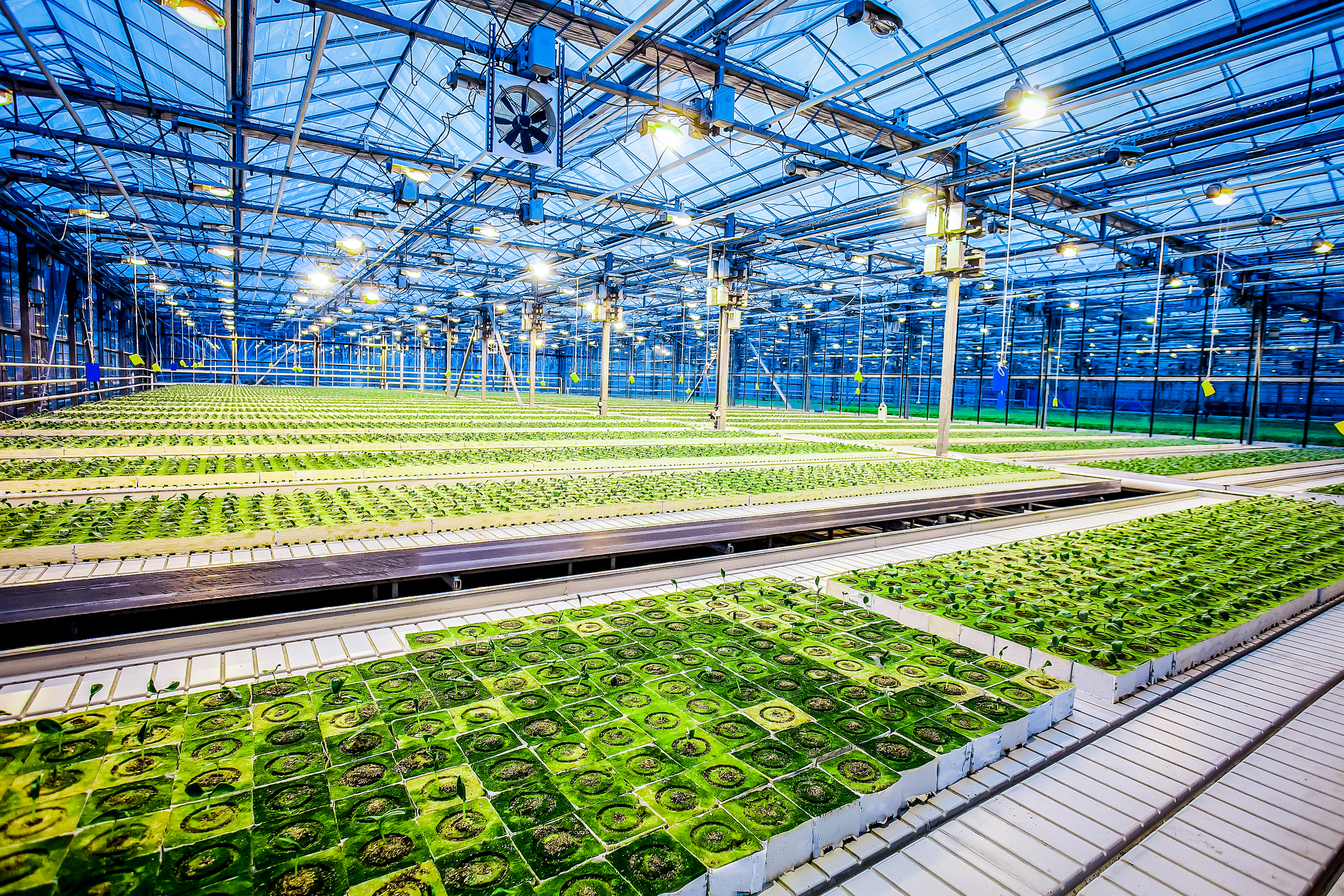
There is a varied number of hydroponic grow systems with different levels of complications involved in each of the systems. But each system impliedly has its respective pros and cons.
The goal of all these hydroponic systems is to deliver nutrients to the crops in a controlled manner. These nutrients are found in their natural state in soil and are required to plant growth.
On the broader perspective, in hydroponic systems, nutrients can be applied via two types of methods:
Passive Methods: A soil substitute is used, which is a medium for growth. This medium grips the flourishing roots and holds nutrients, water, and oxygen to give a better quality crop at a faster rate.
Active Methods: Extra participation of the grower is required in all the active methods as this process requires regularity in applying the nutrients after a specific period and promoting the recycling process.
Run-To-Waste-Systems: This is an alternative method wherein it does not require a recycling system. This system utilizes all the nutrients only one time. The main drawback of this system is it increases the wastage and contaminates the surroundings with unwarranted composites, which otherwise could have been reprocessed as plant food.
Hydro Drip System or Top Feed: Difficulty: Intermediate
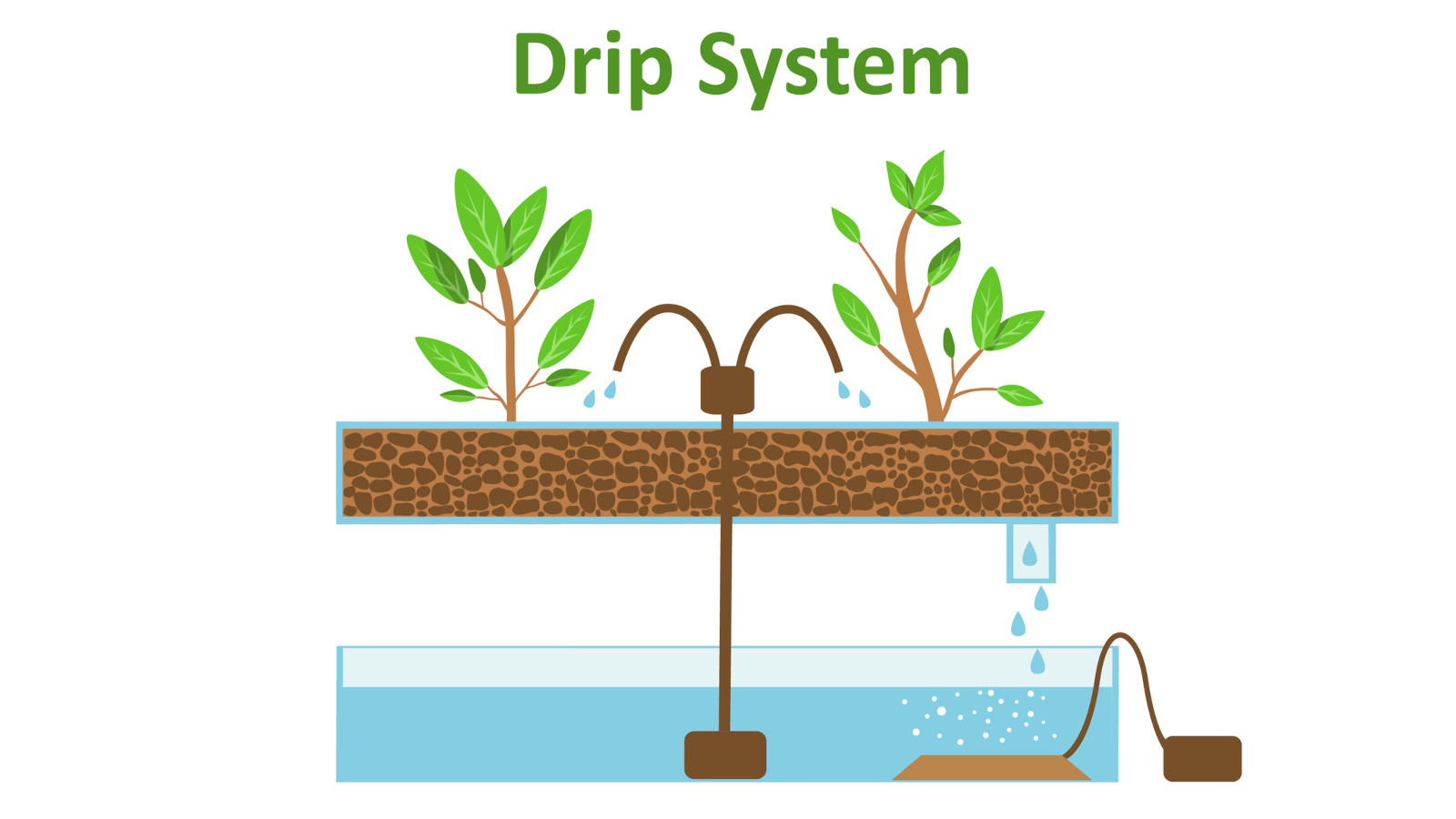
Drop, gravity and top feed hydroponic systems are the most highly appreciated drip systems by most of the growers! The crop growth is very fast as every plant gets the same quantity of nutrients.
How does It work?
- The mechanism in this system includes a spaghetti tube that delivers all the nutrients or drips’ them into the top of the pot.
- A timer is attached to the immersed water pump that delivers nutrients to the roots in a controlled manner.
- All the excessive nutrients that root, weed leaves, or etcetera fails to absorb can be recycled.
The entire drip system requires a constant checking concerning the alterations in nutrient mix levels and water pH factors.
Hydro Nutrient Film Technique: Difficulty: Advanced
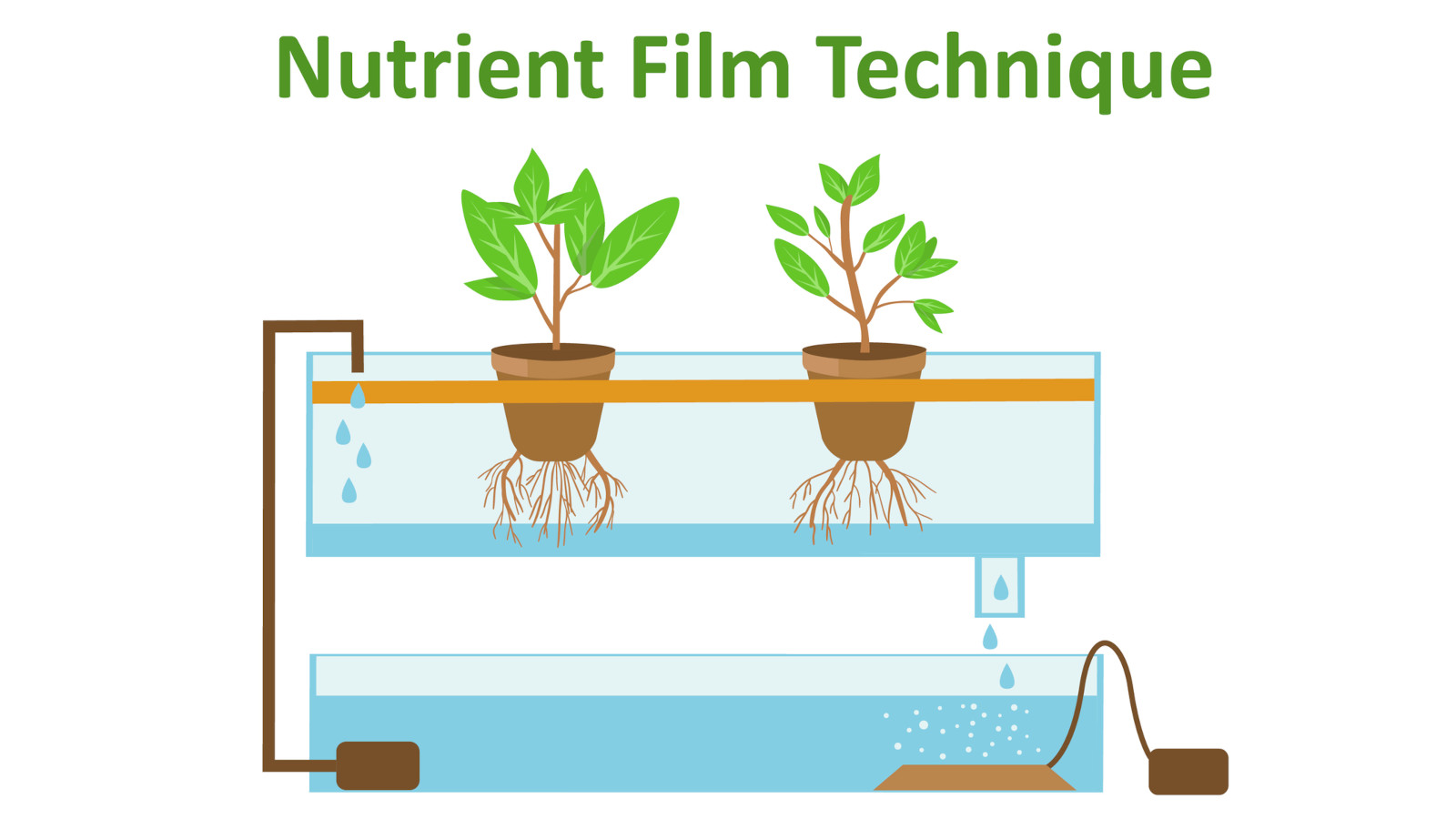
The medium used in this advanced type of active Nutrient Film Technique (NFT) method is Rockwool, wherein the weeds are planted in the net pots.
How does It work?
- The pots are placed on the topmost part of a slanting channel. This angled channel is mostly made of PVC pipes that allow the stream of nutrients in one particular direction.
- The roots find their way down via the Rockwool, pots, and then into the slanting channel.
- At this position, the nutrient mixture is showered.
- Unabsorbed nutrients find their way into the reservoir and go for recycling.
In NFT grow setups, a continual supply of nutrients is pumped straight in the grow-tray and on the plant roots. Further, it gets directed to the reservoir.
In this entire mechanism, there is no necessity of timer for the immersed water pump. But, care should be taken in case of power or pump failures because the growing medium is air and such failures can dry out the plant roots very fast.
The exposed roots are highly susceptible to direct sunlight, which not only hurts the roots but can easily cause permanent damage to them.
It is better to give maximum protection against sunlight. It is not recommended to use 4” white PVC pipe. The walls of this pipe are made of a very thin material that favours the penetration of the sunlight, which is very harmful to the roots.
The NFT method requires a filter. The primary function of this filter is to stop the rubble from obstructing the gaps and pumps.
Only experienced growers should choose the option of NFT as it requires continual fine-tuning for its proper functioning and comparatively; it is tough to maintain the entire system.
Still, if some of the enthusiasts choose the NFT method, try using those plants with short growth cycles as the roots tend to fill the pipes and obstruct the nutrient solution flow.
Its generally recommended that you keep the grow tray in humid condition throughout the growth cycle to safeguard the roots from dehydration. Also, it is recommended to keep the trays covered to avoid direct sunlight.
Some of the experienced growers will use the perfect colour combination to keep the roots in the complete dark. From outside they apply white colour (acts as a light reflector), and inside they paint it black.
It is also suggested that you check the temperature within the tubes thoroughly. The recommended temperature should be less than 70 degrees Celsius. The Oxygen level should be approximately eight parts per million (PPM).
Ebb and Flow System: Difficulty: Beginner
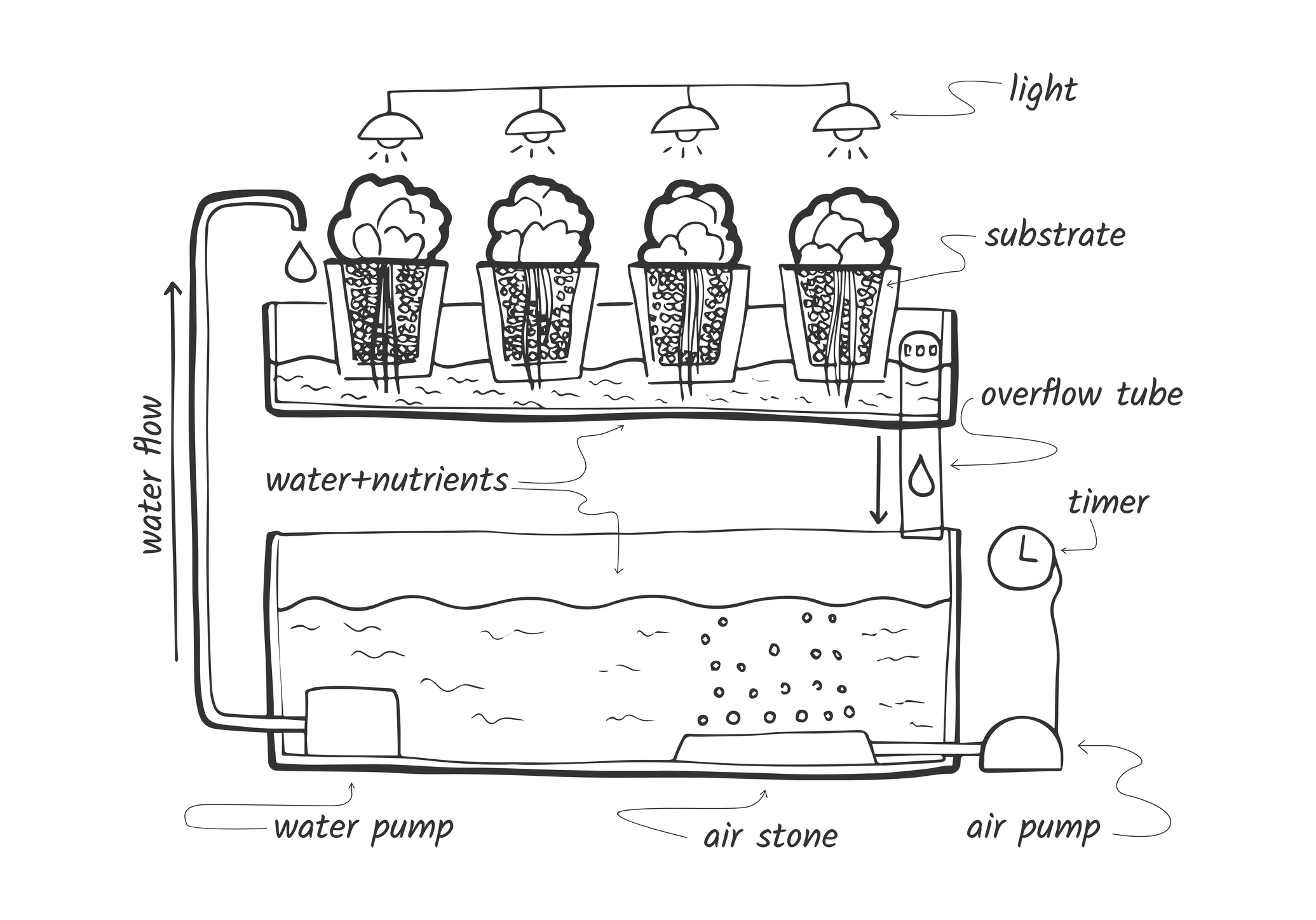
In the process of Ebb and Flow System, the entire grow tray is flooded with nutrients, which in due course of time routes the nutrient solution back into the reservoir.
A timer is used to operate the immersed water pump. Remember, the pump is highly vulnerable to power failures, pump malfunction, and timer failure.
Ebb and Flow System falls into the easy maintenance category.
Their basic requirement is a considerable-sized reservoir that is topped up and drained out many times in a day. This helps the roots in absorbing oxygen and nutrients throughout the day.
Single pots are put up on the growing platform. These are filled with your choice of a growing medium. Depending on your requirements, the nutrient solution is topped up with approximately one to four inches.
It is recommended to use heavyweight growing mediums. The main reason is - the pots will be positioned within the solution and hence, could tilt and fall over, or float and get drifted away.
If you are wondering which to choose, the best growing medium available is Rockwool.
Ebb and Flow systems are dependent on the perfect timing of the nutrient transfer.
- The small number of nutrients can destroy the roots
- Excessive nutrients will leave the roots without oxygen (Important note: Roots always inhale oxygen while plants inhale carbon dioxide)
It is recommended not to flood the grow tray for more than 30 minutes at one time. Also, ensure that the entire pumping system is functioning throughout the day, else you can kill the whole crop.
Deep Water Culture: Difficulty: Beginner
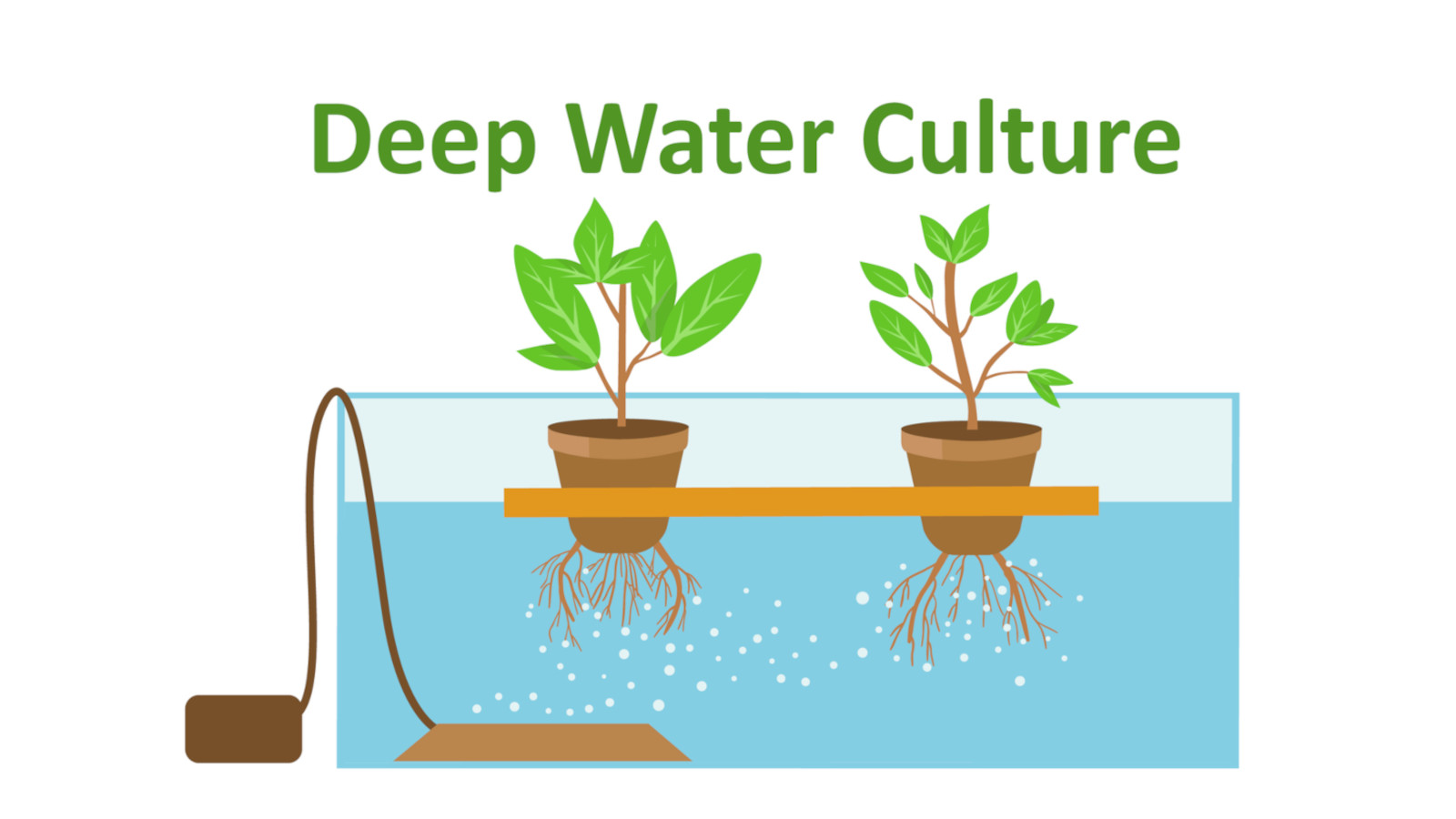
In the Deep Water Culture (DWC) method, the plants are suspended above the nutrients. An air pump is used in this process wherein it discharges air to an air stone. In turn, this air stone releases nutrients and make oxygen available to the plant roots.
In this system, two pots are used - small and big. The weed plants are positioned in one of the small pots.
This small pot is then placed into the bigger pot (even a bucket can be used) having a large cut or hole wherein the smaller pot easily fits in.
The small pot is in a suspended position and does not touch the inside of the larger pot.
This helps in the growth of roots via the bottom of the initial (first) pot through the larger (second) pot to absorb the nutrients.
Some of the DWC growers place air stones inside that provide oxygen into the nutrients solution throughout the day.
In this DWC growing method, it is also recommended to provide some idle time. In this idle time, there should not be the flow of any nutrient solution.
You should not immerse the plant in the water. This will keep the roots dry and thus can absorb the desired amount of oxygen.
One of the DWC types is Bubbleponics. In this type, two pumps are used:
- One pump will continually provide air to the solution in the reservoir.
- The other pump will provide nutrients to the root zone with the help of top feed jet or spaghetti tubes. It allows the flow of the solution through the medium and then touches the reservoir.
Hydro Wick System: Difficulty: Beginner
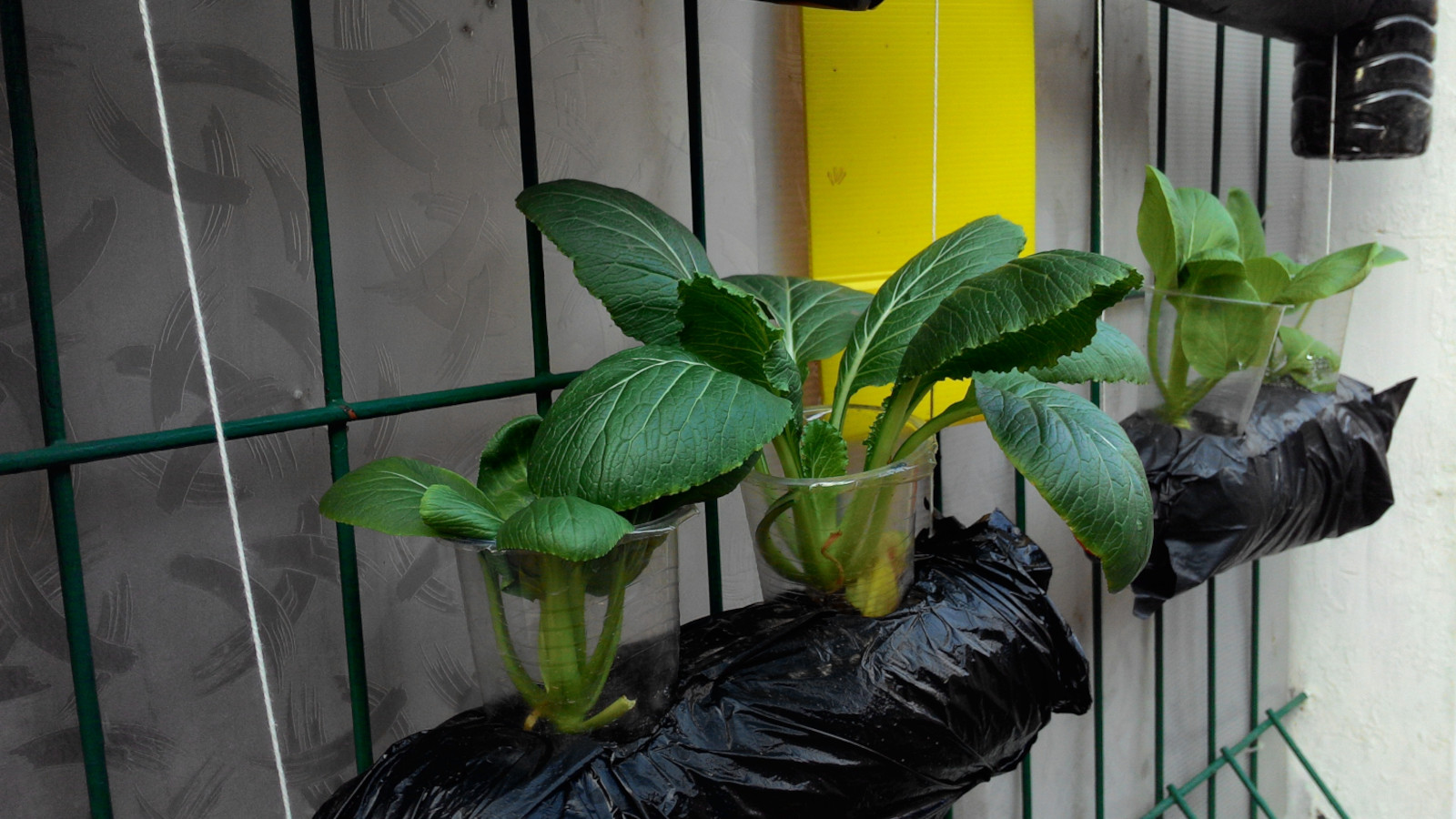
A Wick System is one of the most straightforward systems that can be implemented very fast as it does not have any moving parts.
The number of potential malfunctions and failures of a hydroponics system is proportional to the number of moving parts involved in the setup.
A wick provides nutrients to the grow trays. This wick transmits the nutrients to the roots via a wick that is made out of yarn or cotton.
The wick hydroponic system is better for growing small plants. The plants that require excessive water or large plants tend to absorb nutrient solutions at a faster rate and might starve with the wick system.
Though the wick hydroponic system is one of the simplest, it is also very inefficient when compared to other setups.
What are the Mediums for a Hydroponic Grow?
Any soil substitute that is used in a hydro grow can be a medium for hydroponic growth.
- These mediums are entirely passive, i.e. rarely will they have any chemical reaction with the nutrient solution that adversely affects the cannabis plant growth
- The medium can be made out of varied materials, which are positioned within the container or pots to hold the nutrient solution, oxygen, and water
Some of the mediums like coconut fibre, Rockwool, brick shards, or gravel fall in the category of the non-inert medium, they do react with the nutrient solutions that are applied. But they help in the growth of the plants.
Here is the list of most appreciated mediums for hydroponic grow.
Air
Air contains oxygen, and it is one of the highly useful mediums as roots show very nourished growth as their survival depends on sufficient oxygen! But only oxygen is not enough for rapid growth. A perfect blend of air and perpetual humidity will keep the roots hydrated throughout its lifespan offering highly enriched yield. Most of the aeroponic systems use this medium. Even NFT uses air as a partial medium of growth.
Water
If you consider only water as a medium, it is not a perfect medium. But DWC uses water as its primary medium. When any grower thinks of using water as the main medium remember to keep this medium always aerated by installing the air stone or pump. This ensures the sufficient oxygen requirements that cannabis plants require to survive.
Rockwool
Rockwool is one of the most prevalent options for hydroponic grow setups with cannabis plants. It has a fantastic property to hold air and water correctly. Also, the plant roots can easily take their position themselves in the Rockwool. The disadvantage of using Rockwool is the pH content might be on the higher side that requires constant monitoring and some additional balancing.
Expanded Clay
Expanded clay is also called as hydroton or hydroclay. These clay balls are round in shape and small in size with small pores that provide air and nutrients. By the time your crops are ready for harvesting, the roots will be entangled over the balls of expanded clay.
Perlite
This medium of hydroponics is composed of volcanic sand or glass. It can be an effective medium as it has the capability of holding nutrients and air, but it has certain drawbacks. It is very light in weight and cannot retain nutrients for a long duration. It is also a fragile material that breaks easily. Perlite is recommended as a medium for both types of grow combination - inert and non-inert.
Vermiculite
Vermiculite is perfection beyond comparison in holding water and hence highly accepted worldwide. This growing medium is perfect for planting clones or replicas that need to take root. Small traces of Aluminum, Magnesium, Phosphorus, and Silicon are found in vermiculite. Avoid using construction and industrial-grade vermiculite as its full of toxic pollutants.

James King
James is an experienced writer and legal cannabis advocate in Australia. He answers all the questions about business, legalisation and medicinal cannabis.
Disclaimer: Cannabis Place are not doctors and we recommend consulting health professionals for accurate information. This site may contain information regarding drugs. This medicinal cannabis content is designed for an 18+ audience. Click here for our full disclaimer
